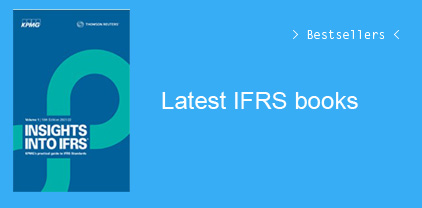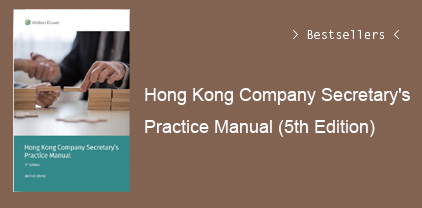Preface xi
CHAPTER 1 Introduction to Management Accounting and Cost Accounting 1
The Purpose of Accounting 2
Information Needs in Business 2
Different Sources of Information for Businesses 4
A Definition of Accounting 5
The Job of an Accounting System 5
The “Accounting Family” 6
Financial Accounting 7
Cost and Management Accounting 9
Is Accounting a Universal Language? 10
Differences in Financial Accounting 11
Differences in Cost and Management Accounting 13
National Differences in Management Accounting – Problem or Strength? 15
German “Controllers” versus “Management Accountants” 16
The Role of a Controller in a Business Organization 17
Ethical Aspects of Accounting 19
CHAPTER 2 Cost Terms and Cost Concepts 23
The Meaning of “Cost” in Business 24
Comparing Cost with Other Accounting Measures 26
Company Goals as Starting Point of Accounting Measures 26
Different Accounting Measures for Different Purposes 26
Receipts and Payments: Changes in a Company’s Cash Position 26
Proceeds and Expenditures: Changes in a Company’s Monetary Assets 27
Income and Expenses: Changes in a Company’s Total Assets 28
Revenues and Costs: Changes in a Company’s Required Assets 29
Comparing Different Value Concepts in Business Operations 30
Cost Revisited: An Overview of Different Cost Concepts 39
Overview 39
Cost Concepts for Predicting Cost Behavior 39
Cost Concepts for Comparing Cost 43
Cost Concepts for Differentiating Time Reference 44
Cost Concepts for Decision making 46
Cost Concepts for Assigning Cost to Different Objects 48
Cost Concepts for Analyzing Cash Relevance 50
Cost Concepts for Preparing Financial Statements 52
Relevance of Cost Categories for Business Management 53
CHAPTER 3 Cost Behavior and Cost Estimation 61
Things to Know About Cost Behavior 62
No Costs without Cost Drivers! 63
Typical Shapes of Cost Functions 64
Cost Stickiness and Cost Elasticity 67
Mathematical Models of Cost Behavior: Cost Functions 69
Methods for Estimating Cost 72
Heuristics 72
Conference Method 73
Account Analysis Method 73
Scatterplots and Visual Fit Method 74
High-low Method 75
Regression Analysis 76
Engineering Method (Physical Measurement) 78
Comparison of Methods and Examples 79
CHAPTER 4 The Basic Structure of a Cost Accounting System 89
Cost Accounting as Information Source in Business 90
Defining the Conceptual Framework for a Cost Accounting System 92
Defining Relevant Cost Objects 93
The Minimum Set-Up 93
The Advanced Set-Up 95
Defining Principles for Recording and Allocating Cost 96
Comparing Cost Allocation Principles 101
Comparison 105
Defining Time Reference and Cost Accounting Periods 106
General Cost Accounting Principles 109
The Basic Layout of a Cost Accounting System 111
IT as an Enabler of Cost Accounting Systems 113
CHAPTER 5 Cost Type Accounting 117
Purpose and Nature of Cost Type Accounting 118
Cost Categorizations Used in Cost Type Accounting 119
Cost Categorization Chart and Chart of Accounts 119
How to Value Resource Consumption 122
Main Cost Types in Detail 123
Cost of Material 124
Cost of Labor 128
Asset-related Cost 129
Cost of Financing / Cost of Capital 130
Third Party Cost 130
Taxes and Public Fees 131
Imputed Cost 132
Imputed Depreciation 133
Imputed Interest 138
Imputed Risk Charges 142
Imputed Management Salaries 144
Imputed Rent 145
CHAPTER 6 Cost Center Accounting 151
Purpose and Nature of Cost Center Accounting 152
Splitting the Organization into Cost Centers 154
Number of Cost Centers in Practice 155
Primary Cost Allocation 157
The Cost Allocation Chart 159
Overview Cost Allocation Chart for Comparing Multiple Cost Centers 160
Detailed Cost Allocation Chart for Managing Sub-unit Cost 160
Determining the Allocation Base for Overhead Costs 161
Determining Overhead Allocation Rates 165
Internal Support Department Cost Allocation 165
Cost Allocation Problems in Internal Support Departments 166
Combining Support Cost Allocation Principles – An Example 168
Allocating Costs of Multiple Support Departments 171
Direct Method 175
Step-Down Method 177
Reciprocal Method 180
Iterative Method 182
Does Support Department Cost Allocation Really Matter? 184
CHAPTER 7 Cost Unit Accounting (Product Costing) 191
Purpose of Product Costing 192
Overview of Product Costing Methods 194
Process Costing 195
Single-Stage Process Costing 196
Two-Stage Process Costing 196
Multi-Stage Process Costing 197
Equivalence Coefficient Costing 199
Multi-Stage Equivalence Coefficient Costing 202
Job Order Costing 203
Simple Job Order Costing 204
Extended Job Order Costing 206
Department-based Costing 209
Machine Hour-Based Costing 212
Joint Product Costing 214
CHAPTER 8 Absorption Costing versus Variable Costing 221
Accounting for Profits 222
Absorption Costing 223
Absorption Costing Example 224
Strengths of Absorption Costing 226
Weaknesses of Absorption Costing 227
Variable Costing 229
Multi-Step Variable Costing 231
Variable Costing Example 233
Decision making with Variable Costing 235
Product Portfolio Decisions 235
Product Mix Decisions 237
Product Mix Decisions under Capacity Constraints 238
Special Orders 240
Outsourcing Decisions 242
Outsourcing Decisions and Opportunity Costs 245
Qualitative Factors Influencing Outsourcing Decisions 248
Cost-Volume-Profit Decisions 249
Break-Even Analysis 249
Graph Method for Break-Even Analysis 252
Target Operating Income 253
Sensitivity Analysis for Cost-Volume-Profit Decisions 254
Assumptions in Cost-Volume-Profit Analysis 256
Strengths of Variable Costing 257
Weaknesses of Variable Costing 257
CHAPTER 9 Cost Planning, Standard Costing and Variance Analysis 263
The Importance of Cost Planning 264
Conceptual Approaches to Cost Planning 265
Static Cost Planning 266
Flexible Cost Planning 268
Flexible Cost Planning Based on Full Absorption Cost 269
Flexible Cost Planning Based on Variable Cost 273
Standard Costs as Basis for Cost Planning and Cost Management 274
Variance Analysis for Cost Management 275
Types of Cost Variances 277
The Problem of Overlapping Sub-variances 279
Approaches to Dealing With Overlapping Cost Variances 282
Alternative Method 285
Proportional Method 286
Cumulative Method 288
Differential-Cumulative Method 292
Bibliography 297
Index 301
































